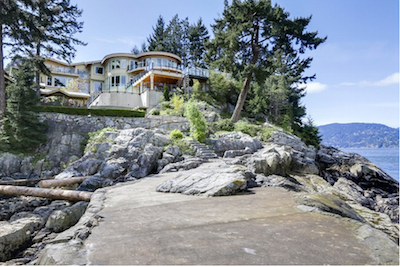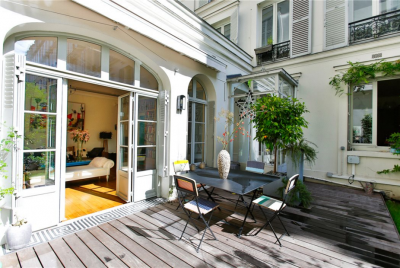 Cape Town, South Africa home
Cape Town, South Africa home
Across the yearlong period ending the fourth quarter of 2015, housing prices increased most dramatically in cities in the Middle East and Africa, according to a new report by Knight Frank.
Housing prices increased in 121 of the 165 markets that “Global Residential Cities Index” tracks and by 4.4 percent overall, outperforming the national level index. The expedited growth of cities, as well as the increased prices in less established urban areas, evidence a growing trend toward urbanism and metropolitanism that will be sustained for several more decades.
“Analyzing both indices (tracking mainstream prices at a city and country level) the two have followed a similar trajectory, although in periods of economic uncertainty the Global Residential Cities Index has outperformed the Global House Price Index,” said Taimur Khan, senior research analyst at Knight Frank.
The Global House Price Index can conceal some large disparities that exist between different cities within the one country – China is a case in point," he said. “Cities with youthful populations, vibrant technology-based economies and with good transport links continue to outperform."
Global urbanization
Prices increased 8.8 percent in Africa year-over-year. Durban, South Africa grew by 11.6 percent, Cape Town, South Africa by 8.6 percent and Johannesburg by 6 percent. The Middle East comprises Istanbul, Izmir, Turkey, Tel Aviv, Jerusalem and Haifa, Israel. Anchored by 25 percent growth in Istanbul, 16.5 percent growth in Izmir and 12.8 percent in Israel, the region grew by an astounding 12.4 percent.
 House for sale in Fresnaye, Cape Town, South Africa; via Knight Frank
“The fundamentals underpinning these two markets should lead to continued growth in their property markets,” Mr. Khan said. “Both regions are seeing prices rise from a low base, and crucially have expanding middle classes who are gaining access to credit and mortgages for the first time.”
Despite the strong performance of the Middle East, which grew 12.4 percent as a whole, the biggest gains occurred elsewhere around the globe. China constituted two cities in the top 10, including top-ranked Shenzhen’s enormous 47.5 percent growth; Auckland, New Zealand’s 25.4 percent and Sydney’s 19.9 percent took second and fourth place; Budapest, Stockholm and Gothenburg finished seventh, eighth and ninth; Vancouver, British Columbia rounded out the top 10.
House for sale in Fresnaye, Cape Town, South Africa; via Knight Frank
“The fundamentals underpinning these two markets should lead to continued growth in their property markets,” Mr. Khan said. “Both regions are seeing prices rise from a low base, and crucially have expanding middle classes who are gaining access to credit and mortgages for the first time.”
Despite the strong performance of the Middle East, which grew 12.4 percent as a whole, the biggest gains occurred elsewhere around the globe. China constituted two cities in the top 10, including top-ranked Shenzhen’s enormous 47.5 percent growth; Auckland, New Zealand’s 25.4 percent and Sydney’s 19.9 percent took second and fourth place; Budapest, Stockholm and Gothenburg finished seventh, eighth and ninth; Vancouver, British Columbia rounded out the top 10.
 Vancouver, British Columbia, Canada home for sale
Markets experiencing the biggest drops were also generally European, though Chandigarh, India’s 7.7 percent year-on-year made it the weakest-performing city. India cut interest rates four times in 2015, but household income continues to fall, phenomena partially responsible for lower home prices.
In North America, where the market grew by a healthy 5.4 percent overall, Portland, OR’s 11.4 percent year-on-year increase and San Francisco’s 10.4 percent were the strongest, with Chicago’s 2.5 percent and Washington’s 1.7 being the weakest.
While European cities landed all along the spectrum, overall growth was 2.9 percent. Russia and the Commonwealth of Independent States – a region represented solely by Moscow and Saint Petersburg – rose by only 0.1 percent.
On the whole, Knight Frank found that urban markets show better performance as time goes on, while rural markets have the opposite trend. The story of the 20th and 21st centuries is partly one of increasing urbanism, and city populations will increase by 30 percent to 8 billion over the next 30 years.
Vancouver, British Columbia, Canada home for sale
Markets experiencing the biggest drops were also generally European, though Chandigarh, India’s 7.7 percent year-on-year made it the weakest-performing city. India cut interest rates four times in 2015, but household income continues to fall, phenomena partially responsible for lower home prices.
In North America, where the market grew by a healthy 5.4 percent overall, Portland, OR’s 11.4 percent year-on-year increase and San Francisco’s 10.4 percent were the strongest, with Chicago’s 2.5 percent and Washington’s 1.7 being the weakest.
While European cities landed all along the spectrum, overall growth was 2.9 percent. Russia and the Commonwealth of Independent States – a region represented solely by Moscow and Saint Petersburg – rose by only 0.1 percent.
On the whole, Knight Frank found that urban markets show better performance as time goes on, while rural markets have the opposite trend. The story of the 20th and 21st centuries is partly one of increasing urbanism, and city populations will increase by 30 percent to 8 billion over the next 30 years.
 House for sale in Paris
The 4.4 percent gains overall continue a trend seen since the fourth quarter of 2014. In the preceding quarters, performance gradually fell from highs approaching 6 percent after a post-recession boom.
Alternate measures
The growth of the Middle East and Africa is also apparent through other studies.
The South African market is a top priority among European brands planning entrance into Africa, according to a survey by real estate advisor CBRE.
CBRE asked 115 brands and retailers for their expansion plans over the next five years, with 28 percent saying South Africa is a top-3 priority in that time frame. As Africa’s middle class continues to grow, proper timing will allow brands to capitalize on the new consumer segment (see story).
While prices of homes in major cities tend to increase, other indices have seen prices dropping.
Prime residential rents across the globe fell by 1.1 percent in 2015, according to another recent Knight Frank report.
The findings in “Prime Global Rental Index,” which tracks luxury rental rates in 17 cities, defined as the top 5 percent in each market, stand in stark contrast to the 2.5 percent growth in 2014. With the economy once again entering a period of uncertainty due to low oil prices and China’s economic slowdown, it could be a bumpy ride moving forward (see story).
“In mature, transparent markets such as London we have seen a strong relationship between the sales and rental markets post-Lehman,” Mr. Khan said. "When prices have dipped (or the rate of price growth slowed) would-be vendors have opted to rent their property and as prices have increased some landlords have opted to sell.
“However, this correlation has been less evident in recent years,” he said. "On the sales side, government stimulus (QE, low interest rates) and on the rental side, weaker demand from corporate tenants may have proved influential in adjusting the correlation.”
House for sale in Paris
The 4.4 percent gains overall continue a trend seen since the fourth quarter of 2014. In the preceding quarters, performance gradually fell from highs approaching 6 percent after a post-recession boom.
Alternate measures
The growth of the Middle East and Africa is also apparent through other studies.
The South African market is a top priority among European brands planning entrance into Africa, according to a survey by real estate advisor CBRE.
CBRE asked 115 brands and retailers for their expansion plans over the next five years, with 28 percent saying South Africa is a top-3 priority in that time frame. As Africa’s middle class continues to grow, proper timing will allow brands to capitalize on the new consumer segment (see story).
While prices of homes in major cities tend to increase, other indices have seen prices dropping.
Prime residential rents across the globe fell by 1.1 percent in 2015, according to another recent Knight Frank report.
The findings in “Prime Global Rental Index,” which tracks luxury rental rates in 17 cities, defined as the top 5 percent in each market, stand in stark contrast to the 2.5 percent growth in 2014. With the economy once again entering a period of uncertainty due to low oil prices and China’s economic slowdown, it could be a bumpy ride moving forward (see story).
“In mature, transparent markets such as London we have seen a strong relationship between the sales and rental markets post-Lehman,” Mr. Khan said. "When prices have dipped (or the rate of price growth slowed) would-be vendors have opted to rent their property and as prices have increased some landlords have opted to sell.
“However, this correlation has been less evident in recent years,” he said. "On the sales side, government stimulus (QE, low interest rates) and on the rental side, weaker demand from corporate tenants may have proved influential in adjusting the correlation.”
